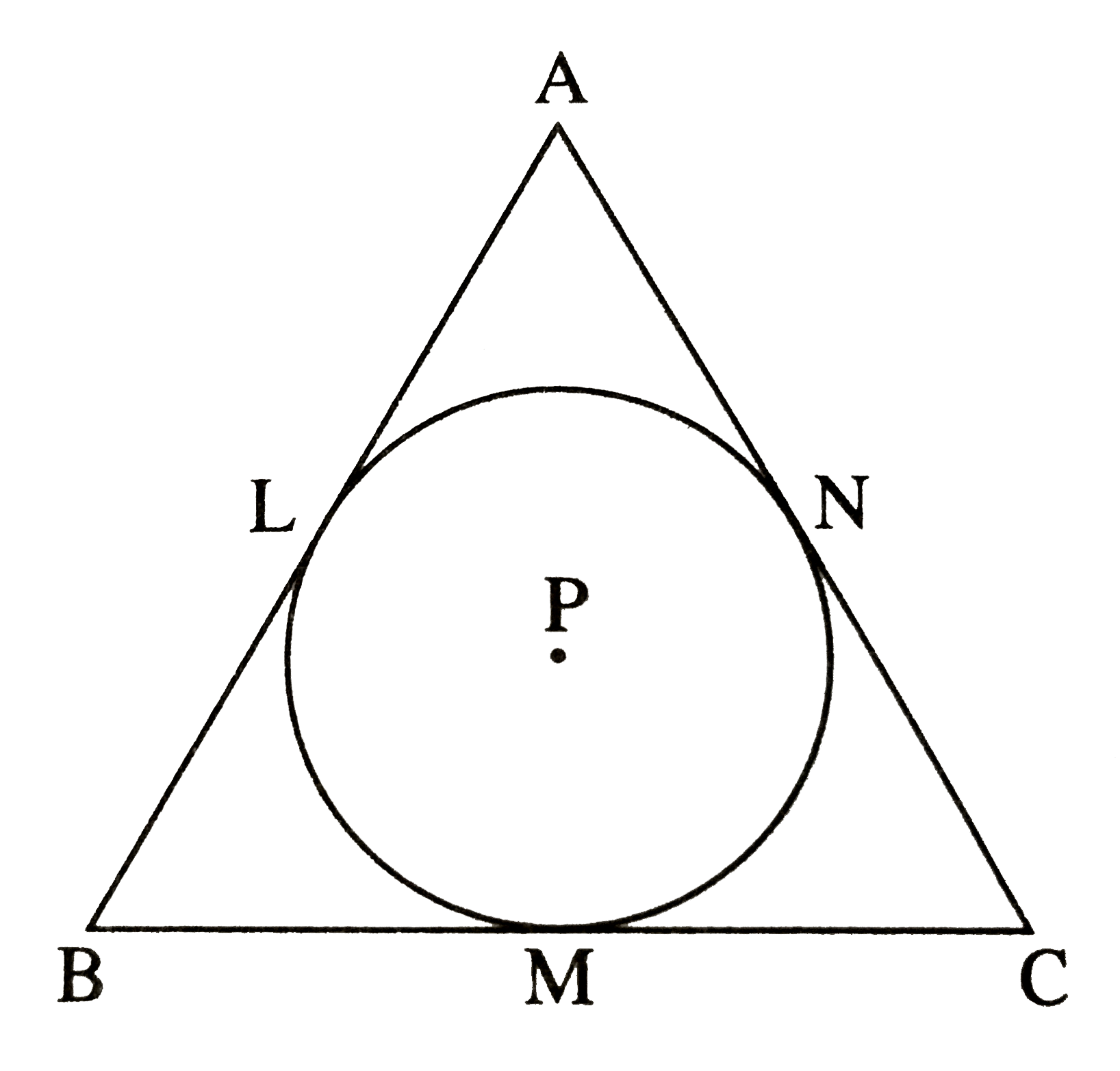ΔABC is an isosceles triangle and AB = AC. If all the sides AB. BC and CA of a ΔABC touch a circle at D, E and F respectively. Then BE is equal to :
12 BC
13 BC
14 BC
23 BC
The correct Answer is:A
To solve the problem, we will use the properties of tangents drawn from an external point to a circle.
1. Identify the Triangle and Circle:
- We have an isosceles triangle ΔABC where AB=AC.
- A circle is inscribed within the triangle, touching the sides at points D, E, and F.
2. Understand Tangent Properties:
- When a tangent is drawn from an external point to a circle, the lengths of the tangents from that point to the points of tangency are equal.
- Therefore, if we consider point B which touches the circle at point E, we have:
BE=BD
- Similarly, from point C touching the circle at point F:
CF=CE
3. Express Side Lengths in Terms of Tangents:
- For side AB:
AB=AD+BD
- For side AC:
AC=AF+CF
- Since AB=AC, we can set up the equation:
AD+BD=AF+CF
4. Substituting Tangent Lengths:
- Let AD=x, BD=BE=y, AF=z, and CF=CE=w.
- Then, we can rewrite the sides as:
AB=x+y
AC=z+w
- Since AB=AC, we have:
x+y=z+w
5. Using the Isosceles Property:
- Since AB=AC and BE=CE (because B and C are equidistant from the circle), we can say:
BE+CE=BC
- Thus, we can express BC as:
BC=BE+CE=y+w
6. Finding the Relationship:
- Since BE=BD and CE=CF, we can express BC in terms of BE:
BC=2BE
- Therefore, we can write:
BE=12BC
7. Conclusion:
- Hence, the length BE is equal to:
BE=12BC
Final Answer:
Thus, the value of BE is 12BC.
- We have an isosceles triangle ΔABC where AB=AC.
- A circle is inscribed within the triangle, touching the sides at points D, E, and F.
- When a tangent is drawn from an external point to a circle, the lengths of the tangents from that point to the points of tangency are equal.
- Therefore, if we consider point B which touches the circle at point E, we have:
BE=BD
- Similarly, from point C touching the circle at point F:
CF=CE
- For side AB:
AB=AD+BD
- For side AC:
AC=AF+CF
- Since AB=AC, we can set up the equation:
AD+BD=AF+CF
- Let AD=x, BD=BE=y, AF=z, and CF=CE=w.
- Then, we can rewrite the sides as:
AB=x+y
AC=z+w
- Since AB=AC, we have:
x+y=z+w
- Since AB=AC and BE=CE (because B and C are equidistant from the circle), we can say:
BE+CE=BC
- Thus, we can express BC as:
BC=BE+CE=y+w
- Since BE=BD and CE=CF, we can express BC in terms of BE:
BC=2BE
- Therefore, we can write:
BE=12BC
- Hence, the length BE is equal to:
BE=12BC
Thus, the value of BE is 12BC.
Topper's Solved these Questions
Similar Questions
Knowledge Check
The in circle of ΔABC touches the sides BC, CA and AB at D, E and F respectively. Then AF + BD + CE is equal to :
A12 (Perimeter of Δ ABC)B13 (Perimeter of Δ ABC)C14 (Perimeter of Δ ABC)DPerimeter of Δ ABCABC is a triangle and the sides AB, BC and CA are produced to E, F and G respectively. If ∠CBE=∠ACF=130∘ then the value of ∠GAB is
A100∘B130∘C80∘D90∘
The incircle of an isosceles triangle ABC, in which AB = AC, touches the sides BC, CA and AB at D, E and F respectively . Prove that BD = DC.

View SolutionΔABC is an isosceles, with AB=AC. If P be any point on the side BC. Prove that AP<AB.
View SolutionIf a line intersects sides AB and AC of a ΔABCat D and E respectively and is parallel to BC, prove that ADAB=AEAC
View SolutionA circle with centre P is inscribed in the △ ABC. Side AB, side BC and side AC touch the circle at points L,M and N respectively. Radius of the circle is r. Prove that: A(△ABC)=12(AB+BC+AC)×r.

View SolutionIn an isosceles triangle ABC with AB=AC, a circle passing through B and C intersects the sides AB and AC at D and E respectively. Prove that DEBC
View SolutionIn an isosceles triangle ABC with AB=AC, a circle passing through B and C intersects the sides ABandAC atDandE respectively. Prove that DECB.
View Solution
